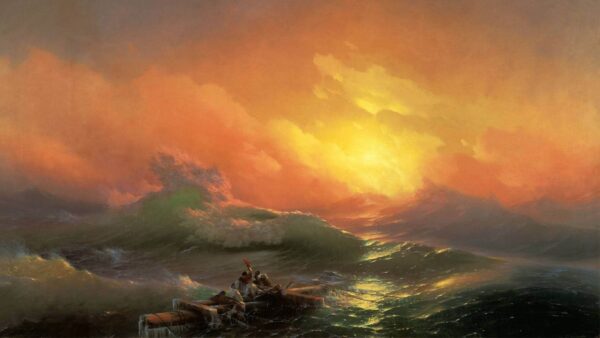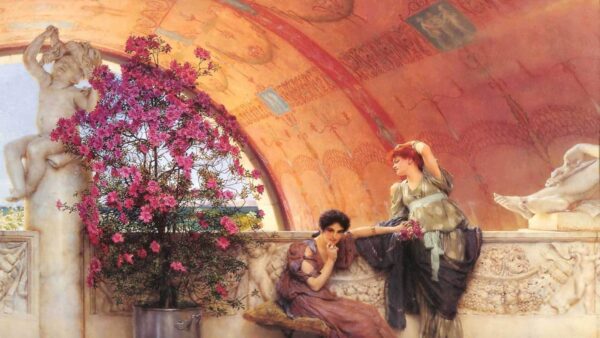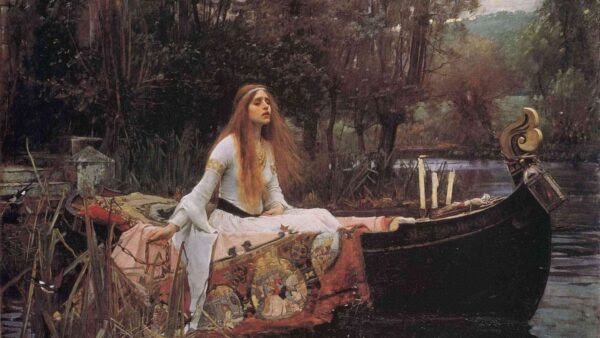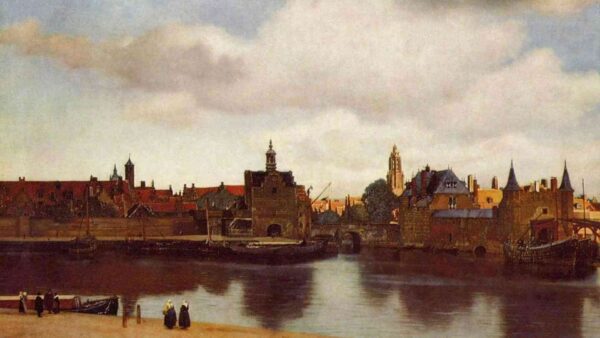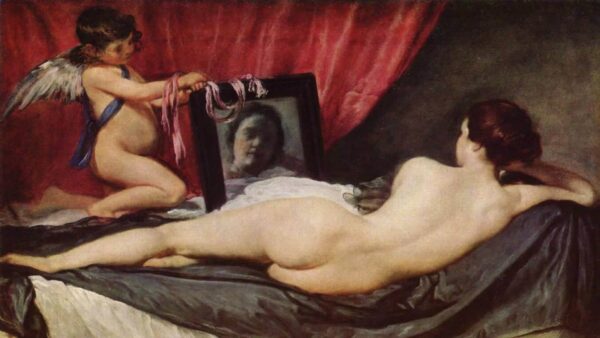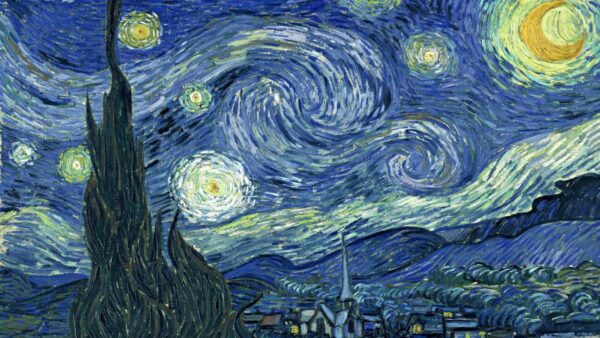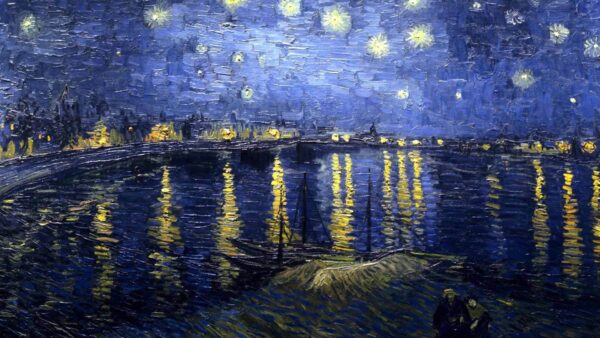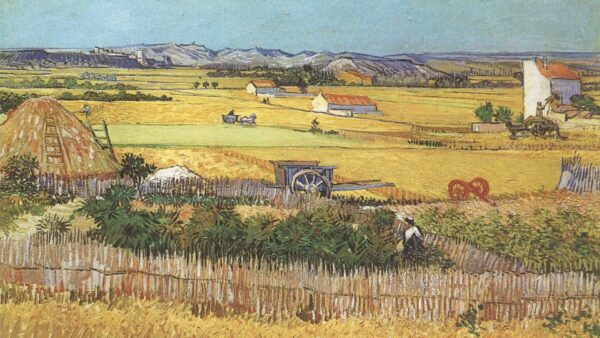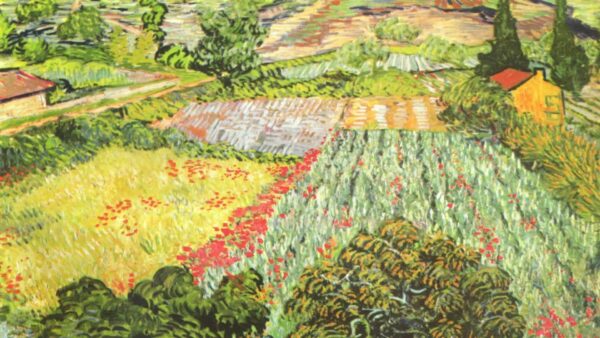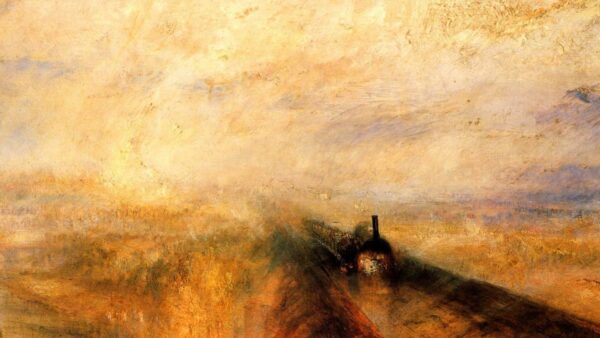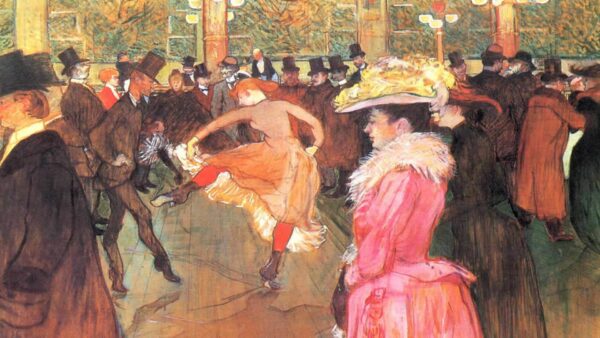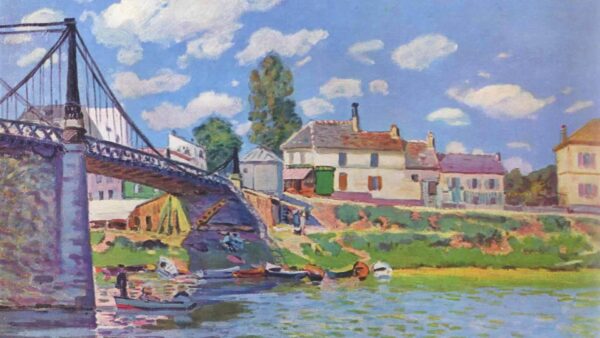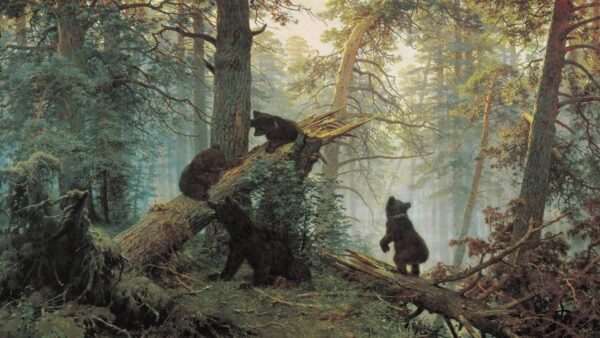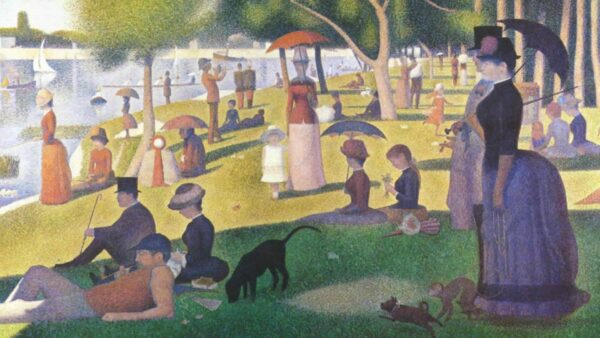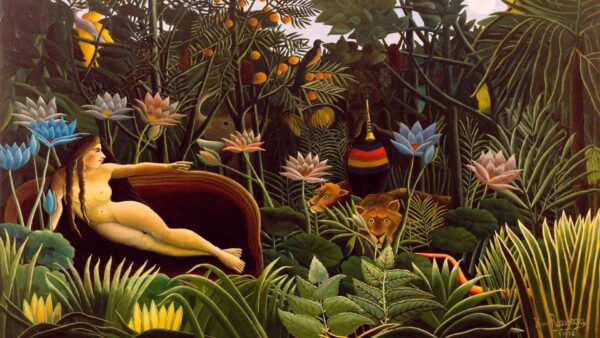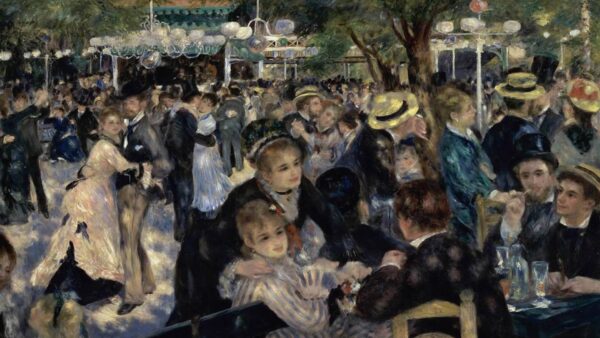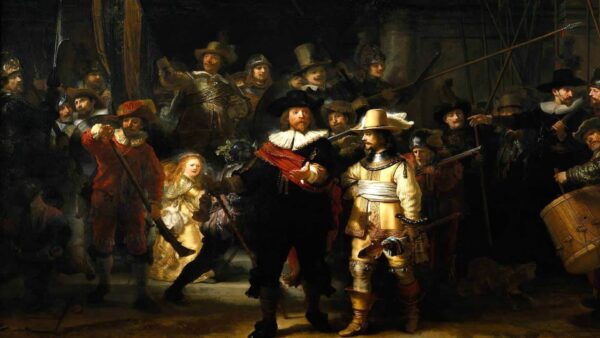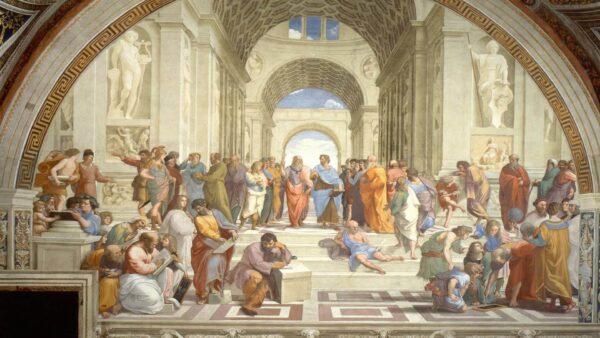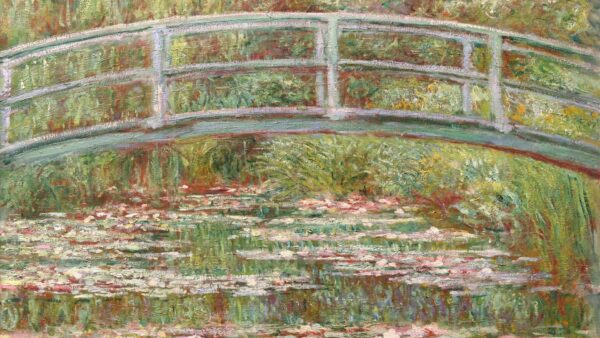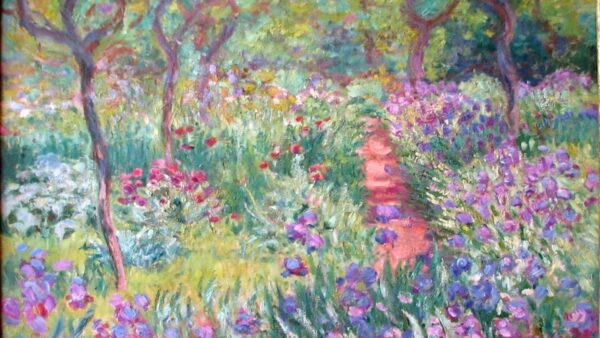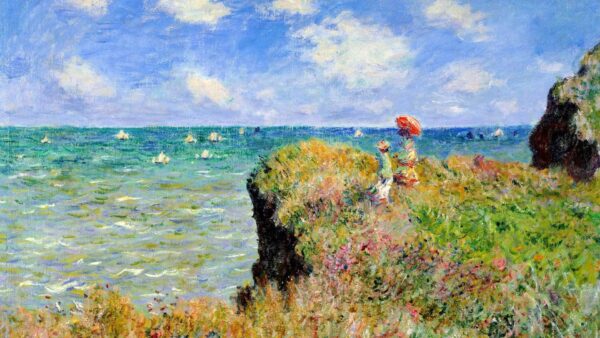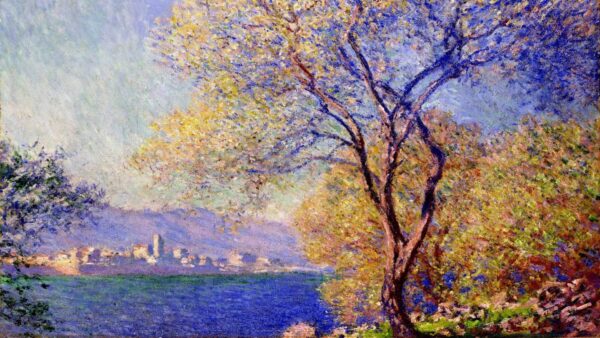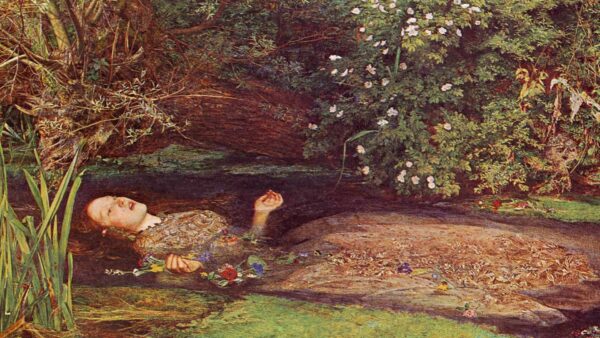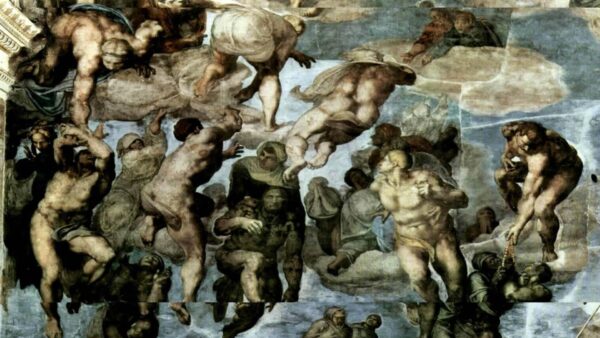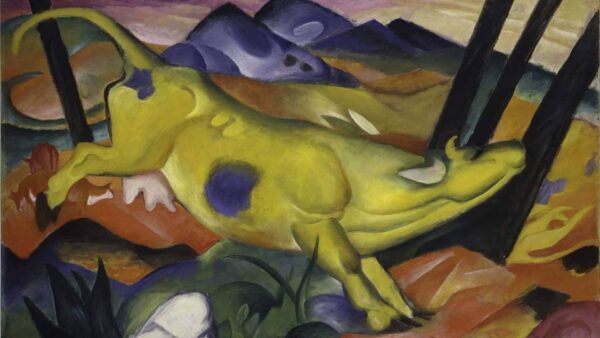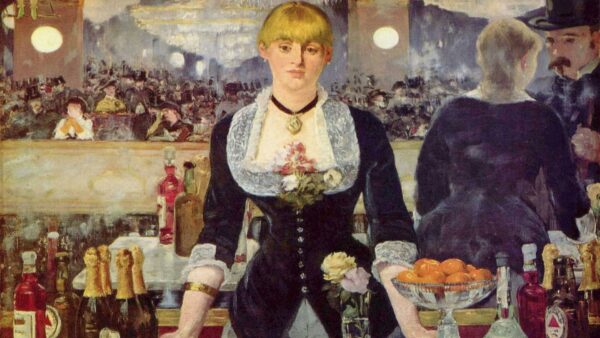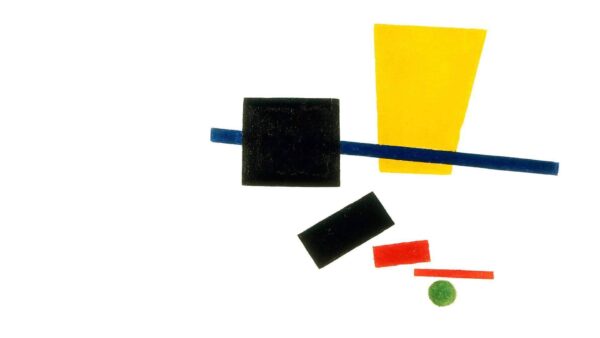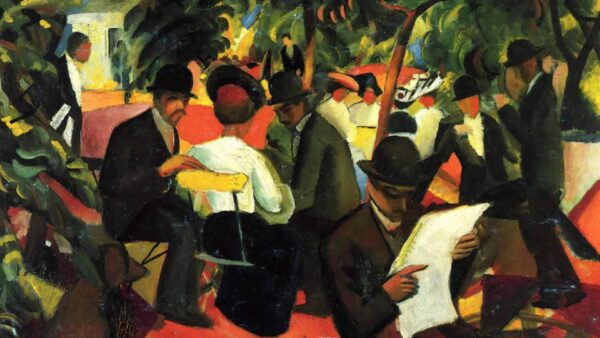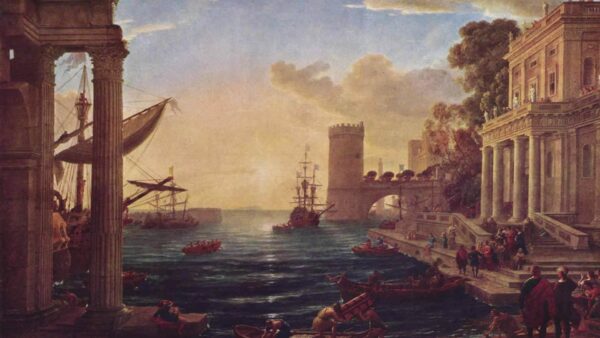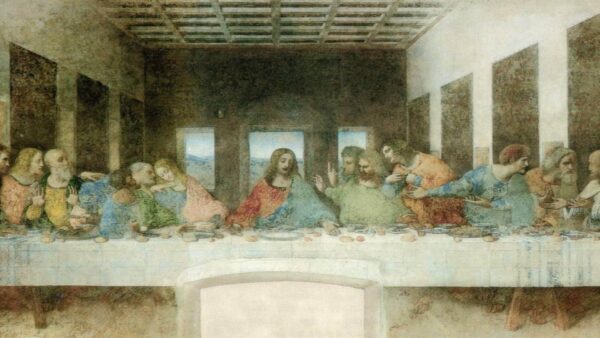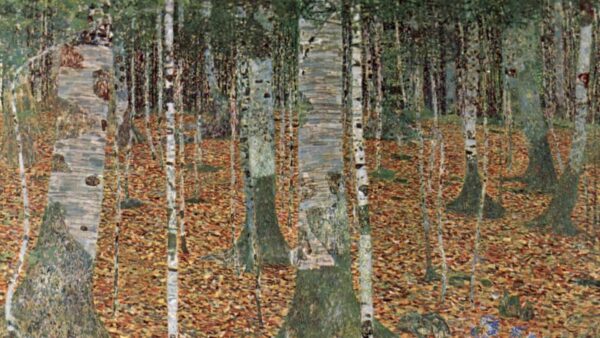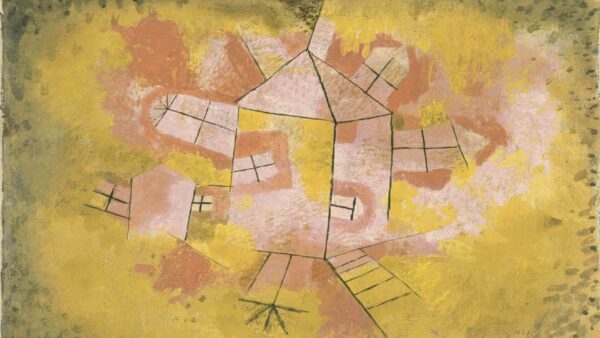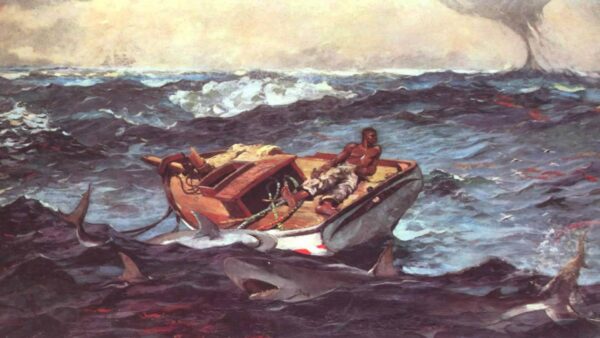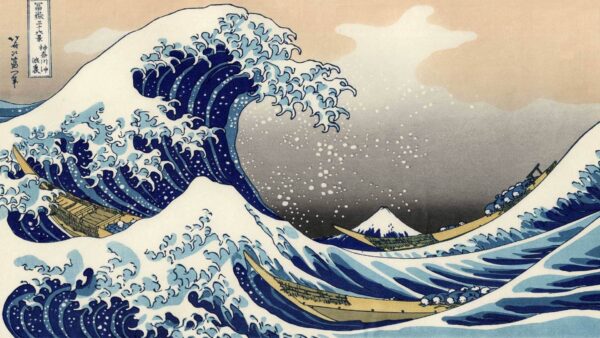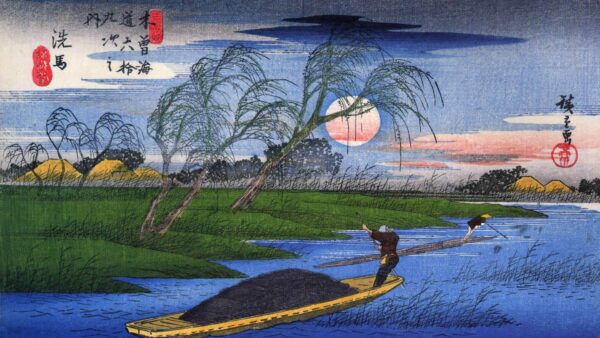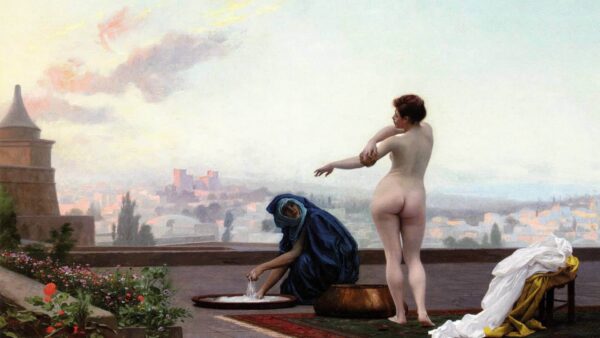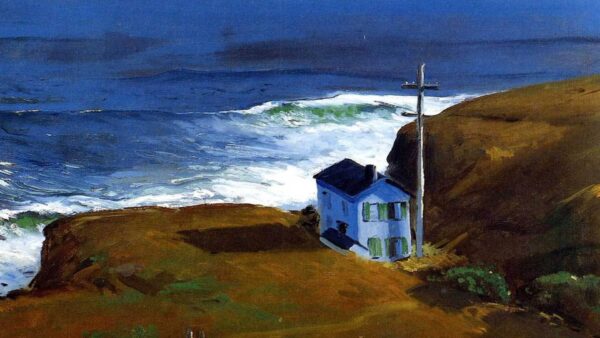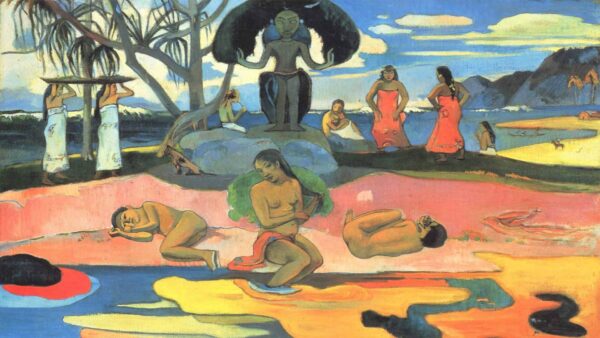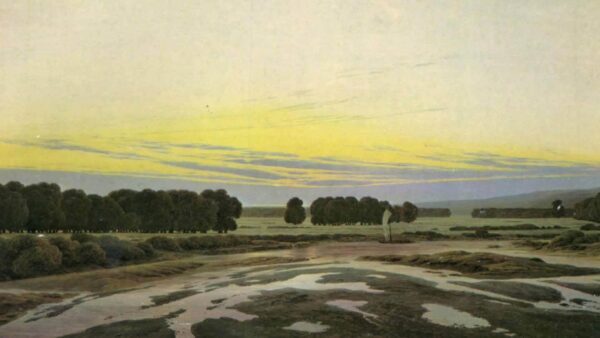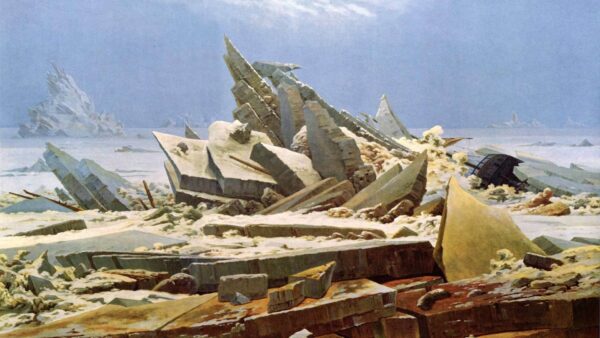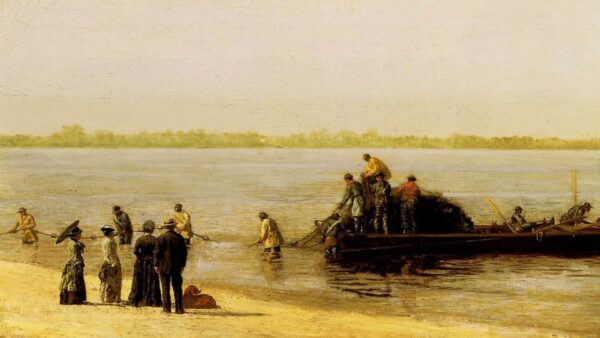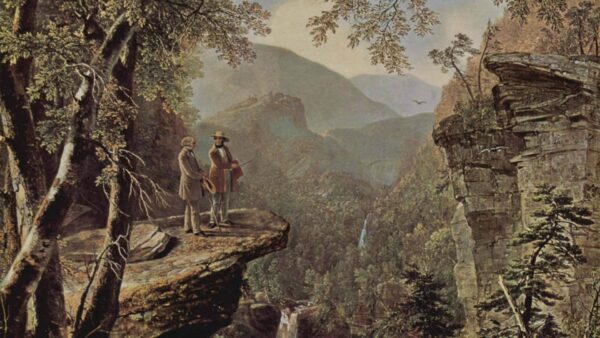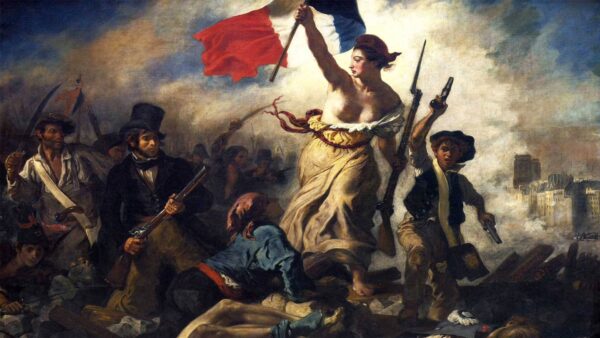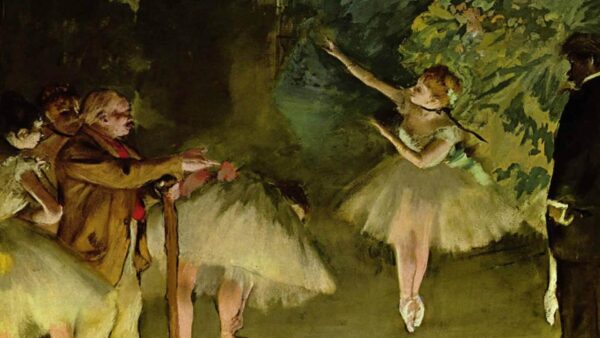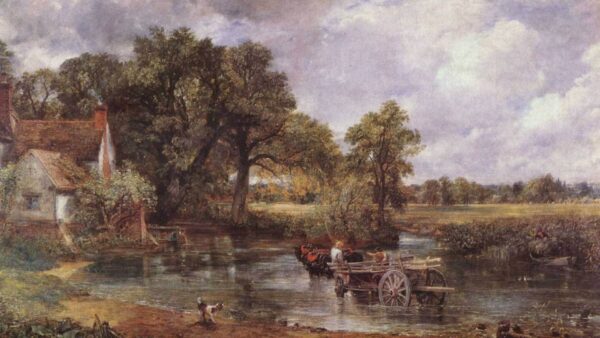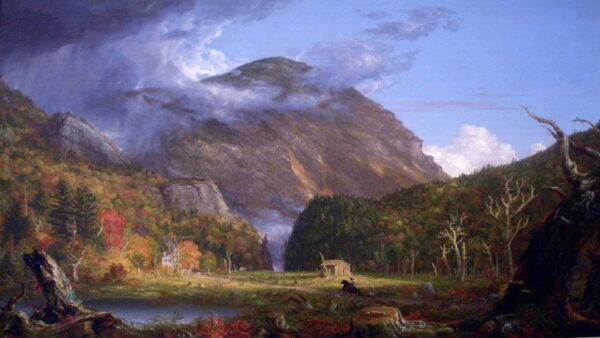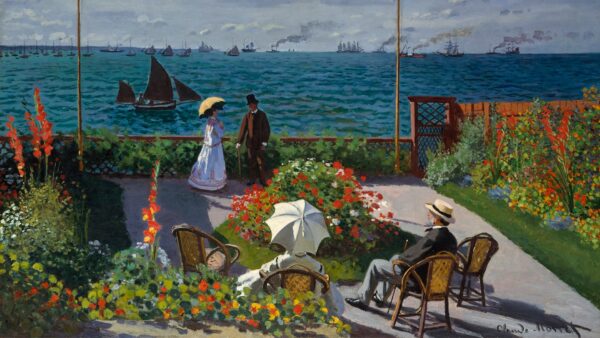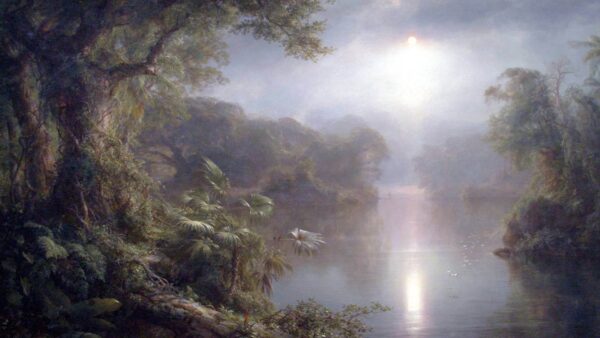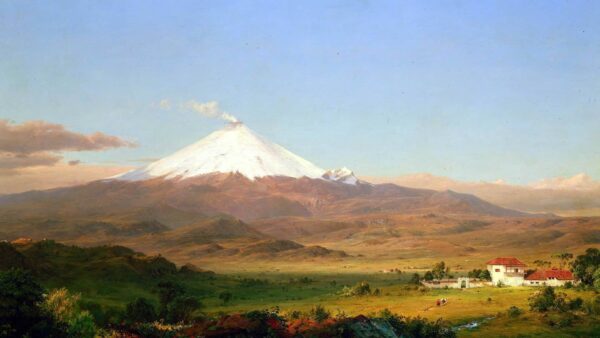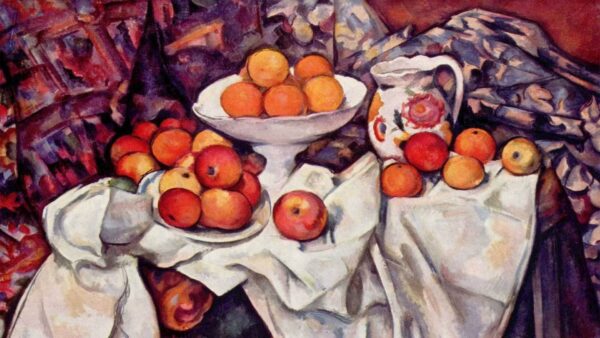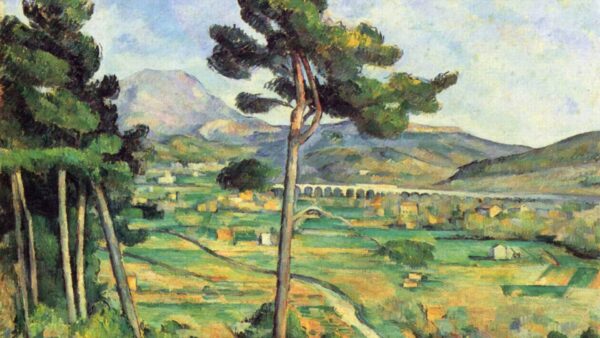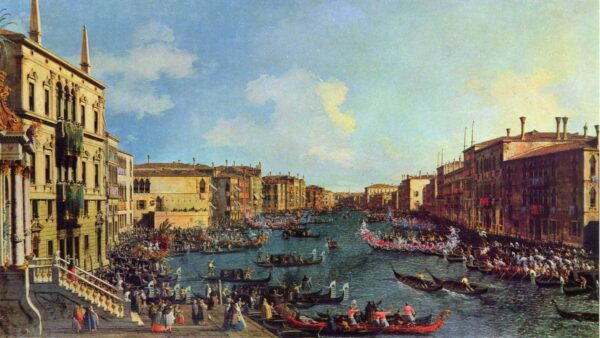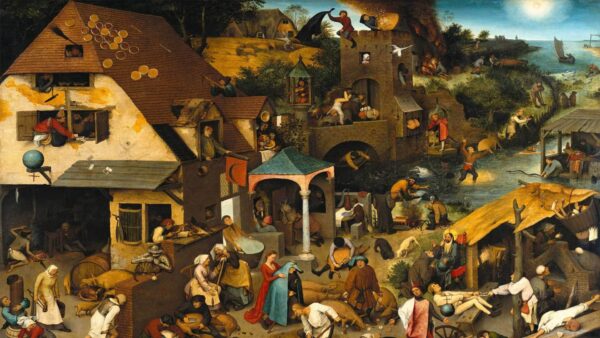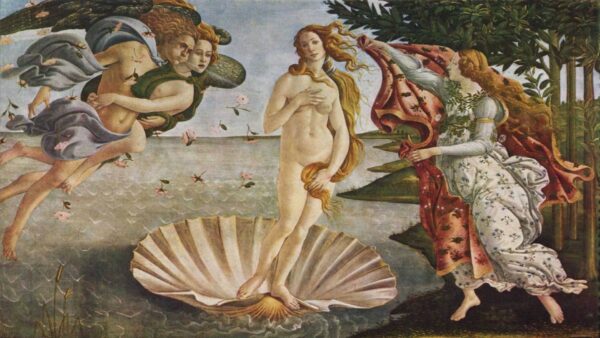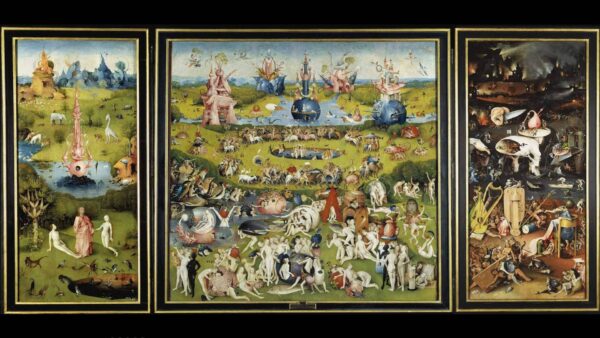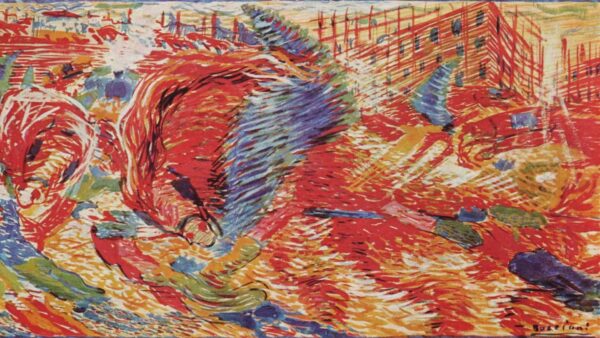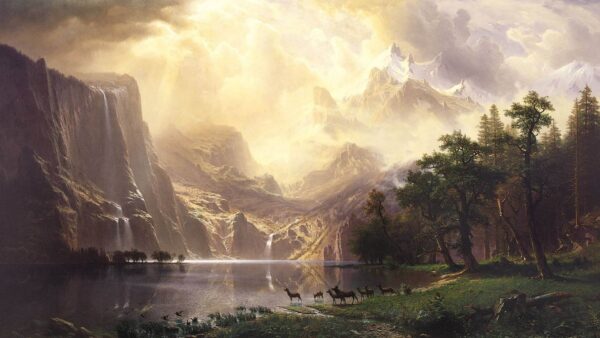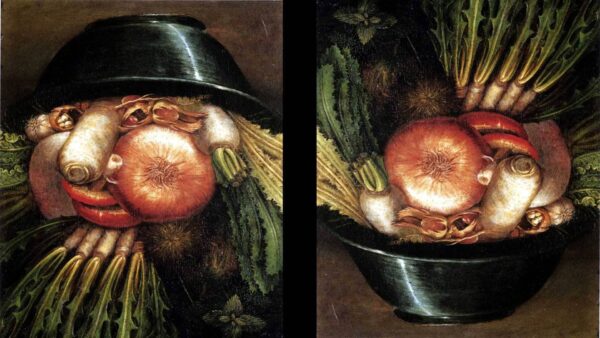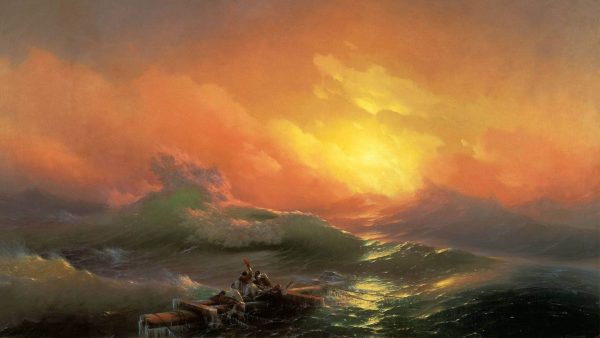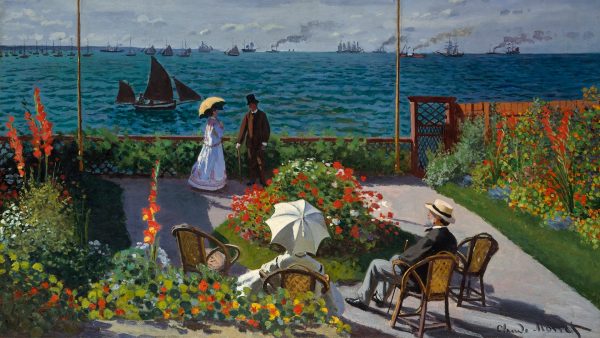Art Wallpapers
There are several good sites offering beautiful wallpapers out there, but only at theartwolf.com you can turn your computer screen into a piece of Art! We have selected some of the most important and well-known artist from the Art History, from Leonardo to Van Gogh.
Free selected wallpaper masterworks
Just take a look at the stunning masterworks displayed below, choose the one you like the most, download it and use it! All wallpapers are high resolution copies of the original work, with no annoying texts or watermarks.
Aivazovsky, Ivan: “The ninth wave”
State Museum, Saint Petersburg
Aivazovsky reaches in this painting an absolute technical perfection, painting a group of unlucky castaways trying to survive. The centre of the composition is the powerful, almost mystical and diffuse representation of the sun.
Alma-Tadema, Lawrence: “Unconscious rivals”
Private collection
While born in the Netherlands, Sir Lawrence Alma-Tadema spent most of his life in London, when he became one of the most important Victorian painters. He is the author of many complex compositions about the Roman Empire, such as this or The Roses of Heliogabalus
Arcimboldo, Giuseppe: “The market gardener”, c.1590
Civic Museum , Cremona
Perhaps the best example of Arcimboldo’s originality is the inverted portraits, apparent still lifes that, once turned 90º, are transformed into strange, disturbing portraits. “The roast” or “The cook” and “The market gardener” are the best and more famous examples.
Bellows, George: “Shore house”, 1911
Private collection
Born in Columbus, Ohio, George Bellows is famous for his depictions of the urban life in New York (“Cliff Dwellers” or the “Polo Crowd” sold for $27.5 million in 1999). Nevertheless, he finished some nice landscapes such as “Shore House” or “Paradise Point”
Bierstadt, Albert: “Among the Sierra Nevada mountains”, 1868
Whitney Museum of Art
Bierstadt (1830-1902) emigrated from Europe to Massachusetts with his family being only a boy. He is one of the first painters who represented the grandeur of the American West, as we can see in his views of Yosemite Valley, the Kern River Valley or the White Mountains.
Bierstadt, Albert: “Storm over the Rocky Mountains”
Fogg Art Museum, Cambridge (USA)
Bierstadt is one of the first painters who represented the grandeur of the American West, as we can see in his views of Yosemite Valley, the Kern River Valley or the White Mountains.
Boccioni, Umberto: “The City Rises”, 1910
New York, MOMA
This is one of the most important Futurist paintings ever created. Boccioni portrays the construction of a new city, emphasizing the importance of the human work and the dynamism of the modern life.
Bosch, Hieronymus: “The Garden of delights”, c.1510
Madrid, Museo del Prado
One of the most famous and commented paintings of all the western painting. The work by Bosch is basically moralizing, didactic. The artist sees in the society the triumph of the sin, the depravation, which have caused the fall of the human being from its angelical character.
Botticelli, Sandro: “The Birth of Venus”
Florence, Ufizzi
This is not only Botticelli’s most famous work, but also one of the most appealing masterpieces from the Italian Renaissance. Sensual and colourful, “The Birth of Venus” is one of the most well-known paintings in the world
Bruegel the elder, Pieter: “Dutch proverbs”, 1559
Berlin, Gemäldegalerie
Works by Bruegel (as we can see in works such as ” The Dutch Proverbs “) are full of irony and even a love for the rural life that seems to anticipate the Dutch landscape painting of the next century
Canaletto: “The Regatta seen from Ca Foscari”, 1727
London, National Gallery
Giovanni Antonio Canal -Canaletto- is by far the most famous Venetian 18th century painter. Among his pupils we found Guardi, Bellotto or Moretti, among others
Cézanne, Paul: “Montagne Sainte-Victoire”, 1882-85
New York, Metropolitan Museum
This work is “cubist before the cubism”: the triangular mountain and the prairie elements -geographic or edificatory- acquire volume thanks not to the perspective, but to the superposition of chromatic planes
Cézanne, Paul: “Still life with apples and oranges”, 1895-1900
New York, Metropolitan Museum
Cézanne is arguably the greatest master the Still Life Painting of any era, and this shining painting constitutes one of his most ambitious compositions
Church, Frederick Edwin: “Cotopaxi”, 1855
Smithsonian Museum
Church represents the culmination of the Hudson River School : the love for the landscape of Cole, the romantic lyricism of Durand, and the grandiloquence of Bierstadt, but braver and technically more gifted than anyone with them.
Church, Frederick Edwin: “Morning at the tropics”, 1877
Washington, National Gallery of Art
Church is one of the best landscape painters of all time, perhaps only surpassed by Turner and some impressionists or postimpressionists like Monet or Cézanne
Cole, Thomas: “Crawford Notch”, 1839
Washington, National Gallery of Art
Cole is known as the founder of the Hudson River School. Born in Britain , his family emigrates to America when he was only 17 years old, so we can consider him a totally American painter. Cole discovers the beauty of the Hudson River in 1825, after emigrating to New York.
Constable, John: “The Hay Wain”, 1821
London, National Gallery
Constable (1776-1837) is, with William Turner, the great figure of the English romanticism. Unlike his contemporary, he never left England, and he devoted all his time to represent the life and landscapes of his loved England.
Degas, Edgar: “Ballet class”, 1875
Private collection
Edgar Degas’ paintings depicting dancers and ballerinas rank among the most charmings artworks ever created
Delacroix, Eugene: “Liberty leading the people”, 1830
Paris, Louvre
“Liberty leading the People” is a work filled with symbolism. Immediately associated with the French Revolution, Delacroix’s masterwork also demonstrates the capacity of the Painting to become the symbol of an age.
Durand, Asher Brown: “Kindred spirits” (detail), 1849
Private collection
Two men at the top of the rocks, contemplating a fantastic fluvial valley, studded with rocks, shrubs and water jumps. Everything is peaceful; everything is perfect within the grandiloquence of the Nature
Durand, Asher Brown: “Pastoral landscape”, 1861
Washington, National Gallery of Art
More romantic and less faithful to the reality that Cole, their works are despite more beautiful and poetic, with clear influences of masters like Meindert Hobbema or Claude Lorrain. He is the author of works as ” Kindred Spirits” or ” The beeches”.
Eakins, Thomas: “Shad fishing at Gloucester, Delaware River”, 1881
Philadelphia Museum of Art
Eakins was one of the most important painters of the American 19th century. “The Gross clinic”, a 1875 canvas by Eakins, was purchased by the National Gallery and the new Crystal Bridges Museum of American Art for $68 million.
Friedrich, Caspar David: “The great Preserve (Ostra Preserve)”, 1832
Dresden, Gemäldegalerie
Caspar David Friedrich is the most famous of all the German romantic painters, and one of the greatest landscape painters of the Art history. This stunning painting is one of his most famous and admired works.
Friedrich, Caspar David: “Wreck in the Sea of Ice”, 1823/24
Hamburg, Kunsthalle
Caspar David Friedrich is the most famous of all the German romantic painters, and one of the greatest landscape painters of the Art history. This stunning painting is one of his most famous and admired works.
Gauguin, Paul: “The day of the Gods”, 1894
Chicago, Art Institute
Gauguin travelled to the tropics searching an artistic redemption, a comeback to the primitive an exotic that could help him to find the way in which his Art could be purified.
Gérôme, Jean-Léon: “Bethsabee”, 1889
Paris, Louvre
Gérôme was one of the last masters of the French neo-classicism tradition. He rejected the impressionist movement and produced many paintings in an Orientalist and Historical style.
Hiroshige, Ando: “Men poling boats past a bank with willows”, 1858
Tokyo, National Museum
Ando Hiroshige is considered the last great master of Japanese stamp, interested, as Hokusai, for the natural elements and landscape. His unquestionable masterpiece is the series of “One hundred famous landscapes from Edo”
Hokusai, Katsushika: “The wave”, c.1830
New York, Metropolitan Museum
The wave is her much more than a mere oceanic circumstance. It’s a monster, menacing with its canines the agile and audacious ships that cross, flexible, the Japanese seas. The terrible ocean’s claw is so powerful that threatens to devour even the sacred Mount Fuji.
Homer, Winslow: “The Gulf Stream”
New York, Metropolitan Museum
Really, the terrible expressivity, bordering on macabre of the work makes unnecessary almost every commentary, while we assist helpless to the tragic end of the unlucky sailor, represented with a really effective exaggeration
Klee, Paul: “Revolving House”, 1921
Madrid, Thyssen-Bornemisza Museum
Few artists are as difficult to classify as Paul Klee, a leading figure in a period of important artistic revolutions and innovations. “Revolving house” shows Klee’s mastery of color and tonality.
Klimt, Gustav: “Beech forest”, 1903
Neue Galerie der Stadt
Gustav Klimt (July 14, 1862 – February 6, 1918) was an Austrian Symbolist painter and one of the most prominent members of the Vienna Art Nouveau. In 2006, one of his paintings was sold for $135 million, a record price for any painting.
Leonardo da Vinci: “The Last supper (detail)”, 1495-97
Milano, Santa Maria della Grazia
There is no artist more legendary than Leonardo. In the whole History of Art, no other name has created more discussions, debates and studies than the genius born in Vinci in 1452. ‘The Last supper’ is one of his most famous works.
Lorrain, Claude: “Embarkation of the Queen of Saba”, 1648
London, National Gallery
Claude Lorrain is widely considered as one of the most important landscape paintes of all time, and an important influence in all Romantic painters such as Delacroix, Gericault, or even Joseph Mallord William Turner
Macke, Auguste: “Gartenrestaurant”
Bern, Kunstmuseum
August Macke is one of the most important painters of the German Expressionism, and a founder member of the “Der Blaue Raiter” group along with Kandinsky. Macke’s brilliant career was cut short by his death at the World War I at age 27.
Malevich, Kazimir: “Painterly realism of a football player (detail)”, 1915
Heirs of Kazimir Malevich
Creator of Suprematism, Malevich is one of the most controversial figures of the history of art among the general public. In 2008, one of his “suprematist compositions” was sold for $60 million in New York.
Manet, Edouard: “Bar at the Folies Bergere”, 1882
London, Courtald Institute Galleries
Manet’s paintings of cafe scenes are observations of social life in nineteenth century Paris, and this stunning and complex canvas is one of his most famous masterpieces.
Marc, Franz: “The yellow cow”, 1911
New York, Guggenheim Museum
Born in 1880, Franz Marc was one of the principal painters of the expressionist movement. He shows a great interest in nature, represented with bright, vivid colours, as we can see in “The fate of the animals” and “The yellow cow”
Michelangelo: Frescoes in the Sistine Chapel, c.1540
Sistine Chapel
The Sistine Chapel constitute one of the supreme masterworks of the universal Art. The scene of “the last judgment”, in which he worked during four years, is a colossal composition in which Michelangelo creates a universe of titans, formed by almost sculptural volumes
Millais, Sir John Everett: “Ophelia”, 1852
London, Tate Gallery
Sir John Everett Millais was one of the members of the Pre-Raphaelite Brotherhood (with Dante Gabriel Rossetti, John William Waterhouse and William Holman Hunt) The subject of this famous painting is taken from Shakespeare’s Hamlet.
Monet, Claude: “Terrace at Sainte Adresse”, 1867
Metropolitan Museum of Art, New York
The bourgeois scene is developed under a strong “plein air” light. The painting is so delightful that we are immediately tempted to sit on one of the empty chairs to enjoy this sunny Sunday afternoon
Monet, Claude: “The cliff walk, Pourville”, 1882
Nationalmuseum, Stockholm
Between 1881 and 1883 Monet made a series of trips to various coastal towns in Normandy, as Dieppe, Pourville or Trouville. Unlike in former seascapes, Monet seems to focus more on the coastal landscape in the ocean itself
Monet, Claude: “Antibes seen from the Salis Gardens”, 1888
Toledo Museum of Art
In 1888, Monet rented for three months a small castle in Antibes, in the French Riviera. The artists immediately fell in love with the landscape – “so full of light” – of the Mediterranean, and with the turquoise and pink tones of the Mediterranean light
Monet, Claude: “The artist’s garden at Giverny”, 1900
Yale Art Galleries
During his last years in Giverny, Monet painted a considerable number of beautiful, charming works depicting his fantastic garden
Monet, Claude: “Nympheas, Japanese Bridge”, 1899
New York, Metropolitan Museum
Monet’s series of the “Nympheas” have been described as “The Sixtine Chapel of the Impressionism”. This stunning, almost abstract example is in the collection of the Boston Museum of Fine Arts
Raphael: “The School of Athens”, c.1510/11
Vatican, Apostolic Palace
“The School of Athens” is not only Raphael’s most ambitious work, but also one of the most famous and complex compositions of the Western Painting. The list of portrayed men includes Plato, Socrates, Archimedes or Raphael himself
Rembrandt: “The Night watch”, 1641-42
Amsterdam , Rijksmuseum
“The night watch” is one of the most important paintings of the whole history of Art. Rembrandt has represented the exact moment in which the captain of the company has ordered the advance of his men, but this order seems to have not arrived yet to his subordinates
Renoir, Pierre-Auguste: “Moulin de la Galette”, 1876
Paris, Musée d’Orsay
This painting has been described as “the most beautiful painting of the 19 th century”. The scene depicted one of the numerous dances celebrated in the Moulin de la Galette , one of the most frequented clubs of Montmartre
Rousseau, Henri: “The dream”, 1910
New York, Museum of Modern Art
This is a sensational painting that reunites in itself all the magic and fantasy of Rousseau, who explained the work with this speech: “The woman in the sofa dreams that she has been transferred to this forest and she listens to the sound of the snake charmer.”
Seurat, Georges: “Sunday afternoon on the island of La Grande-Jatte”, 1884-86
Chicago, Art Institute
Georges Seurat is one of the most famous post-impressionist painter and. “Sunday afternoon on the island of La Grande Jatte” is his unquestionable masterpiece and a milestone of the late 19th century Painting.
Shishkin, Ivan: “Morning in a pine forest”
Tetryakov Gallery, Russia
This work is a marvelous pictorial fantasy that goes beyong the pure realism developed by many other Russian painters. Shishkin has chosen one of his favorite motifs, the dense Russian pine forest, adding the unusual and rather bucolic presence of a family of bears
Sisley, Alfred: “Bridge at Villeneuve – la – Garenne”, 1872
New York, Metropolitan Museum
Alfred Sisley always felt an artistic attraction for the fluvial landscape. In that sense, his unquestionable masterworks are a group of canvases, painted in 1872 and 1876, depicting the floods of the Seine River in the French town of Port-Marly
Toulouse-Lautrec, Henri: “At the Moulin Rouge”, 1890
Paris, Musée d’Orsay
Born in an aristocratic family, Toulouse Lautrec is known as the great chronist of the 19th century Paris nightlife. This painting, depicting a night in one of the most famous cabarets of Paris -the Moulin Rouge- is considered as one of his masterpieces.
Turner, Joseph Mallord William: “Rain, speed and steam”, 1844
London, National Gallery of Art
Turner is probably the best Western landscape painter of all time, and this masterwork constitutes an almost impressionistic work. The picture is a sensational conclusion to Turner’s investigations about the representation of light and atmospheric effects in painting
Van Gogh, Vincent: “Harvest”, 1888
Amsterdam, Van Gogh Museum
This extraordinary and famous work by van Gogh was painted in “plen air”, and shows van Gogh’s love for the rural life and landscape.
Van Gogh, Vincent: “Starry night”, 1889
New York, Metropolitan Museum
One of van Gogh’s most brilliant and famous works, commonly associated to his increasing madness, and that actually was the result of the artist’s interest for the astronomical investigations
Van Gogh, Vincent: “Field of poppies”, 1889
Bremen, Kunsthalle
This beautiful landscape is a good example of van Gogh’s final style, with a powerful brushstroke and the use of strong, expressive colours
Velázquez, Diego de: “Venus at her mirror”, 1649/1651
London, National Gallery
Along with Rembrandt, Velázquez is one of the two peaks of the Baroque painting, and this beautiful and sensual painting is one of his masterworks
Vermeer: “View of Delft”, 1660-61
The Hague, Mauritshuis
Talking about this painting, some critics said that it is perhaps the first impressionist work in the history of painting. Marcel Proust enthusiasticly said that it is “the most beautiful picture in the world”.
Waterhouse, John William: “The Lady of Shalott”, 1888
London, Tate Gallery
John William Waterhouse was one of the members of the Pre-Raphaelite Brotherhood (with Dante Gabriel Rossetti, John Everett Millais and William Holman Hunt). The group have a great influence in the works of J.R.R. Tolkien
Follow us on:

